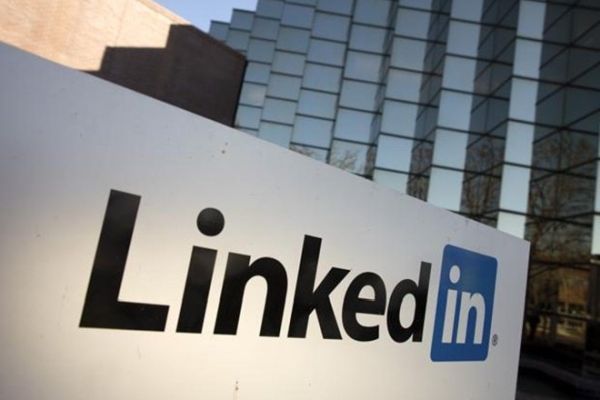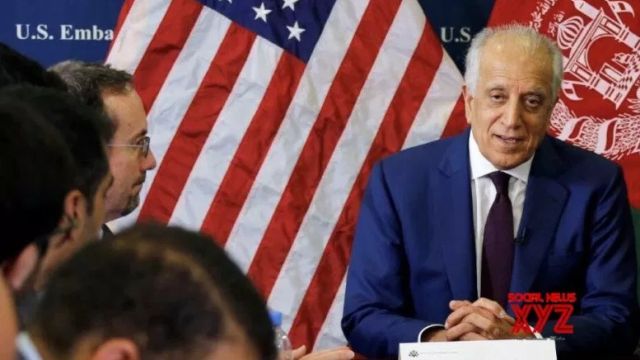
by Editor | May 25, 2021 | Branding, Corporate Jobs, Employment, Markets, Online Marketing, Private Jobs, Technology
 Bengaluru : Infosys is partnering with the Community College of Rhode Island to set up a digital economy aspirations lab for training students in the US for digital jobs, said the software major on Wednesday.
Bengaluru : Infosys is partnering with the Community College of Rhode Island to set up a digital economy aspirations lab for training students in the US for digital jobs, said the software major on Wednesday.
“Our digital innovation and design centre at Providence in Rhode Island will help bridge the gap for design and human-centric skills and provide digital technologies to our clients,” said the city-based IT firm in a statement here.
The centre offers designers and design graduates training in digital skills, exposure to systems, platforms, strategy and organisation domains to make them employable in a digital world.
The $11-billion IT behemoth has so far hired 100 techies as part of its goal to create 500 jobs in the northeastern state by 2022.
“We have hired 7,600 American workers since spring 2017 as part of our commitment to speed up digital innovation of enterprise clients in the US,” said the statement.
—IANS

by Editor | May 25, 2021 | Business, World
 Washington : America’s public debt has reached a record high of more than $22 trillion, according to data released by the US Treasury Department.
Washington : America’s public debt has reached a record high of more than $22 trillion, according to data released by the US Treasury Department.
The amount of the debt as of February 11 was quoted in a daily statement by the department on Tuesday.
“The national debt has now eclipsed $22 trillion, as we added $1 trillion in debt over just the last 11 months,” said Michael A. Peterson, CEO of the Peter G. Peterson Foundation, a non-partisan organisation dedicated to addressing America’s long-term fiscal challenges.
The Congressional Budget Office (CBO) in January estimated that federal budget deficit was about $900 billion in 2019 and exceeds $1 trillion each year beginning in 2022.
Because of persistently large deficits, the public debt is projected to grow steadily, reaching 93 per cent of US gross domestic product (GDP) in 2029 and about 150 per cent of the US GDP in 2049, according to the CBO.
Former Federal Reserve Chairman Alan Greenspan has warned that the rising public debt in the US could lead to the next economic recession.
Analysts said the Trump administration’s $1.5-trillion tax cut and increased government spending have fueled the rapid increase in budget deficits and public debt.
“Reaching this unfortunate milestone so rapidly is the latest sign that our fiscal situation is not only unsustainable, but accelerating,” Xinhua quoted Peterson as saying.
“As we borrow trillion after trillion, interest costs will weigh on our economy and make it harder to fund important investments for our future,” Peterson said.
“We already pay an average of $1 billion every day in interest on the debt, and will spend a staggering $7 trillion in interest costs over the next decade,” he said, adding “we must put our fiscal house in order and begin to manage our national debt”.
—IANS

by Editor | May 25, 2021 | Markets, Networking, Online Marketing, Social Media, Technology
 San Francisco : Microsoft-owned professional networking platform LinkedIn is launching a live video feature on its app to enable users to broadcast real-time videos.
San Francisco : Microsoft-owned professional networking platform LinkedIn is launching a live video feature on its app to enable users to broadcast real-time videos.
The beta version of “LinkedIn Live” is first launching as an invite-only feature in the US, and it remains unclear if and by when would the feature be available for everyone to create LinkedIn Live videos.
“Video is the fastest growing format on our platform right now and Live has been the most requested feature,” TechCrunch quoted Pete Davies, Director of Product Management at LinkedIn as saying on Tuesday.
LinkedIn’s live video effort is supported by a part of Microsoft’s cloud division — Azure Media Services — that is providing encoding for LinkedIn Live.
“The feature is intended to allow users to ask questions or make suggestions in the comments in real time where hosts could moderate those comments in real time too,” Davies said.
The initial live content that LinkedIn hopes to broadcast and cover includes conferences, product announcements, questions and answers, events led by influencers, earnings calls, graduation and awards ceremonies and more.
LinkedIn introduced its first native video features in 2017 which have proven to be a strong engine for engagement and revenue growth at the company.
“Microsoft reported in its last quarterly earnings that revenues at LinkedIn were up 29 per cent, with a reference to growing its ads business specifically with record levels of engagement highlighted by LinkedIn sessions growth of 30 per cent,” the report noted.
The platform recently announced that it has touched the 50 million user-mark in India with 562 million global members.
—IANS

by Editor | May 25, 2021 | World
 New York : US stocks traded mixed, as market sentiments were mixed due to rising hopes on global trade and concerns over bipartisan talks to avert another US government shutdown.
New York : US stocks traded mixed, as market sentiments were mixed due to rising hopes on global trade and concerns over bipartisan talks to avert another US government shutdown.
The Dow Jones Industrial Average slid 53.22 points, or 0.21 percent, to 25,053.11 on Monday. The S&P 500 was up 1.92 points, or 0.07 percent, to 2,709.80. The Nasdaq Composite Index rose 9.71 points, or 0.13 percent, to 7,307.90, Xinhua news agency reported.
Shares of US aircraft manufacturer Boeing were on the rise throughout the day, amid growing hopes on the improvement of overall global trade environment.
Eight of the 11 primary S&P sectors extended gains after market close, with the industrials sector up 0.55 percent after the closing bell, leading the winners.
However, shares of Apple fell almost 1 percent around the closing bell, after iPhone shipments slumped 19.9 percent during the fourth quarter in China, according to a study by US market research company International Data Corporation on Monday.
More than a dozen of blue chips in the Dow extended losses on Monday, sinking the composite Dow index down into a red territory.
Among them, shares of Walt Disney and UnitedHealth Group slumped nearly 1.9 percent and over 1.8 percent respectively, leading the laggards.
Investors were closely watching a bipartisan meeting on Monday afternoon among key US lawmakers to search for clues on the direction toward which US economy is moving.
The move is meant to avoid another partial government shutdown by the deadline that US President Donald Trump previously set on Feb 15.
The meeting was scheduled after talks on border security funding failed between Democrats and Republicans on Sunday, due to a divergence on immigration enforcement rules.
—IANS

by Editor | May 25, 2021 | Muslim World, Opinions
 By Saeed Naqvi,
By Saeed Naqvi,
Two parallel peace processes on Afghanistan are underway. In Doha, Zalmay Khalilzad, US Special Representative for Afghanistan, has held extensive round of talks with Taliban leaders, spread over several days last month. The authorship of this process is, quite jealously, America’s. But on February 5 and 6, Taliban and other Afghan political groups also met in Moscow. A roadmap for the future, titled the Moscow Declaration, was announced. Among its nine points is one which also suggests coordination with the Doha process – there is no jealous guarding of ownership of the peace process here. Anyone interested in peace is the joint author. The Declaration was immediately rubbished by the Presidential Palace in Kabul. “Moscow declaration will not have impact on the peace process in Afghanistan,” said palace spokesman Haroon Chakhansuri.
There are, meanwhile, doubts in many capitals on whether the US is truly contemplating total withdrawal. To some extent these doubts are a function of Donald Trump’s confusing statements and tweets. Take his recent statement in Iraq. His troops in Iraq will enable him “to keep a check on Iran”, something way outside the US-Iraq agreement. In Afghanistan too, while Khalilzad is ploughing the furrow promising one kind of crop, his President makes a totally confusing statement. Trump says he will leave behind in Afghanistan “intelligence elements”. How many?
I have Russian estimates of five years ago. They may have changed, but in those days the Russians were convinced of 30 US bases in Afghanistan.
Of these, the ones at Bagram, Jalalabad, Kandahar, Helmand, Shindand (Herat) and Mazar-e-Sharif were, by the sheer volume of masonry and architecture, not temporary. These bases will remain. Are we then talking about a qualified departure?
If the US is actually planning departure, why would it build a consulate in the heart of Mazar-e-Sharif on a scale which would dwarf large embassies? Renaissance is the only reasonable hotel in Mazar-e-Sharif.
It does not take long for great powers to develop more than one point of interest once they have entered an area of strategic significance. It would therefore be fanciful to imagine an America-free Afghanistan in the foreseeable future. “All this blood and treasure was spent for what?” some Americans will ask. Also the chant in Kabul once was “We must remain in the vicinity to keep a watch on the world’s only Muslim nuclear state.”
After Obama announced in a speech delivered on December 1, 2009 US intention to leave Afghanistan in July 2011, I had argued in a paper for the Observer Research Foundation that Americans can simply not leave Afghanistan. I have been proved right so far. And now once again the “We are leaving” story has been let loose. True, this time the circumstances are different, but let us take a look.
Last July, Zalmay Khalilzad, and Morgulov Igor Vladimirovich, Russia’s Deputy Minister for Foreign Affairs, (who was behind the scene in the Intra-Afghan dialogue in Moscow on February 5 and 6) attended a high-power meet in New Delhi on Regional Issues.
In a more cooperative world order, one would have expected the representatives of the US and Russia to exchange notes on Afghanistan. What transpired was to the contrary. Vladimirovich made an allegation that startled the gathering. “ISIS fighters were being flown to Northern Afghanistan” from Syria. The Afghan air space is under the control of the US and the government in Kabul. “So, who is responsible?” Khalilzad offered a tepid denial. The denial lacked credibility because the Russian allegation had been preceded by another made by Iran’s supreme leader, Ayatullah Khamenei. In the course of his Friday address in January 30, 2018. Khamenei said: “The US transfer of IS terrorists to Afghanistan is aimed at creating a justification for its (US’) continued presence in the region.”
In countries surrounding Afghanistan, doubts about American intentions may be more muted but are quite as strong. It is deeply ironical that Jehadism, terrorism and Islamism manufactured in Afghanistan to fight the Soviets in the 80s may be returning to complete the circle. Indeed, there is a certain inevitability about Islamic militancy becoming a tool of American foreign policy. The triangular romance between Washington, Tel Aviv and Riyadh will ensure this state of affairs for as long as this romance lasts.
Let me explain the inevitability. When Animal Rights groups forced the famous annual fox hunt to stop in South India’s most Anglaise hill station, Ooty, I expressed my curiosity to the master of the Hunt: “What have you done to the hundreds of hounds of high pedigree trained diligently for the Hunt.” The lovely canines had been transferred to an expensive kennel from where dog lovers could acquire them.
So now we know what to do with redundant foxhounds of high pedigree. But what does a state like Saudi Arabia do with spare Islamic militants who have been heavily equipped and trained to kill at the cost of billions? They can only be relocated to newer theatres of conflict like Afghanistan. From here they can plague all the countries the US wishes to destabilize – Xinxiang in China, the Caucasus in Russia, Iran and Pakistan too if it does not behave according to the US diktat.
To make confusion worse confounded, Erik Prince, founder of the world’s biggest mercenary military company, which has mutated from Blackwater to Academi and Triple Canopy, is back in Afghanistan floating the idea of US troops to be replaced by Prince’s mercenary army. His plan that Afghanistan be administered by a “Viceroy” was shot down by National Security Adviser H.R. McMaster and Defence Secretary James Mattis. After the two were shown the door, Prince has been all over Afghanistan again in and Khalilzad’s notice. The only person who has refused to meet him in Kabul is President Ghani.
(Saeed Naqvi is a commentator on political and diplomatic affairs. The views expressed are personal. He can be reached on saeednaqvi@hotmail.com )
—IANS

 Bengaluru : Infosys is partnering with the Community College of Rhode Island to set up a digital economy aspirations lab for training students in the US for digital jobs, said the software major on Wednesday.
Bengaluru : Infosys is partnering with the Community College of Rhode Island to set up a digital economy aspirations lab for training students in the US for digital jobs, said the software major on Wednesday.



